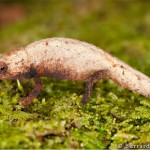
Clearly hearing stories of the big-time from his pals in the Bronx toilet system, one Florida Corn Snake decided it was time for him to take his shot at fame in the big city. A Queens man found a 2½-foot-long Corn Snake hiding in his car’s engine yesterday morning. His car had just been shipped up from Florida, where the snakes are common (here they’re kept mainly as pets). But now that Old St. Patrick’s has even more papal power, the city can get in on all that snake-banning business.





